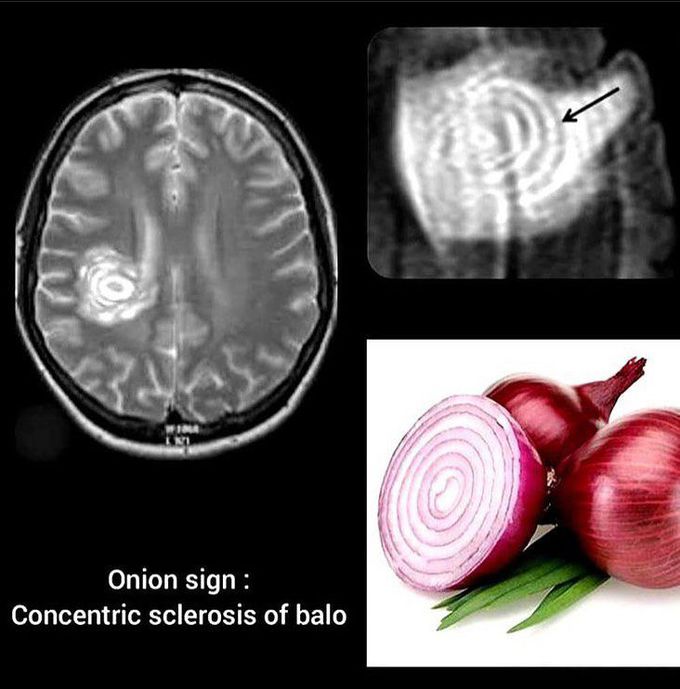


Baló Concentric Sclerosis
Baló concentric sclerosis is a rare and severe monophasic demyelinating disease, considered a subtype of multiple sclerosis, appearing as a rounded lesion with alternating layers of high and low signal intensity on MRI, giving it a characteristic 'bullseye' or 'onion bulb' appearance. Epidemiology It is a rare disorder most commonly found among people of Han Chinese and Filipino descent, although multiple sclerosis in these populations is less common than in Caucasians. Clinical presentation The presentation can be similar to other forms of multiple sclerosis, although it is usually monophasic, most closely resembling acute Marburg type multiple sclerosis, with rapid progression and sometimes fulminant course. Pathology Concentric layers of alternating demyelination and preserved myelin are seen, resulting in the characteristic imaging appearance, although the exact mechanism remains unclear. Radiographic features MRI The characteristic feature is the development of alternating bands of demyelinated and myelinated white matter, which is seen as concentric rings or irregular stripes of high or low signal depending on the sequence. T1: irregular concentric areas of iso and low signal T2: irregular concentric areas alternating iso/hypointense and hyperintense signal T1 C+ (Gd): typically a peripheral ring of enhancement in the area of active demyelination DWI: some restricted diffusion in the outer ring. Treatment and prognosis: As with other forms of multiple sclerosis, corticosteroid has been used. The condition tends to have a rapidly progressive course but not necessarily fatal. .
Source: https://www.instagram.com/p/CVU2aQ2MPpI/?igshid=YmMyMTA2M2Y=
